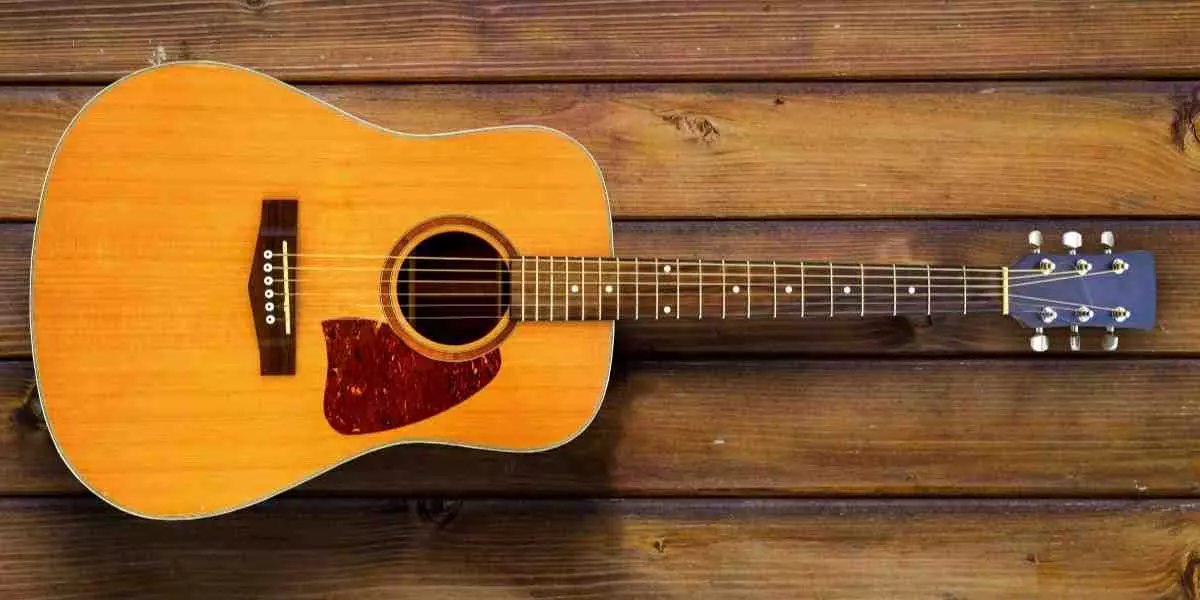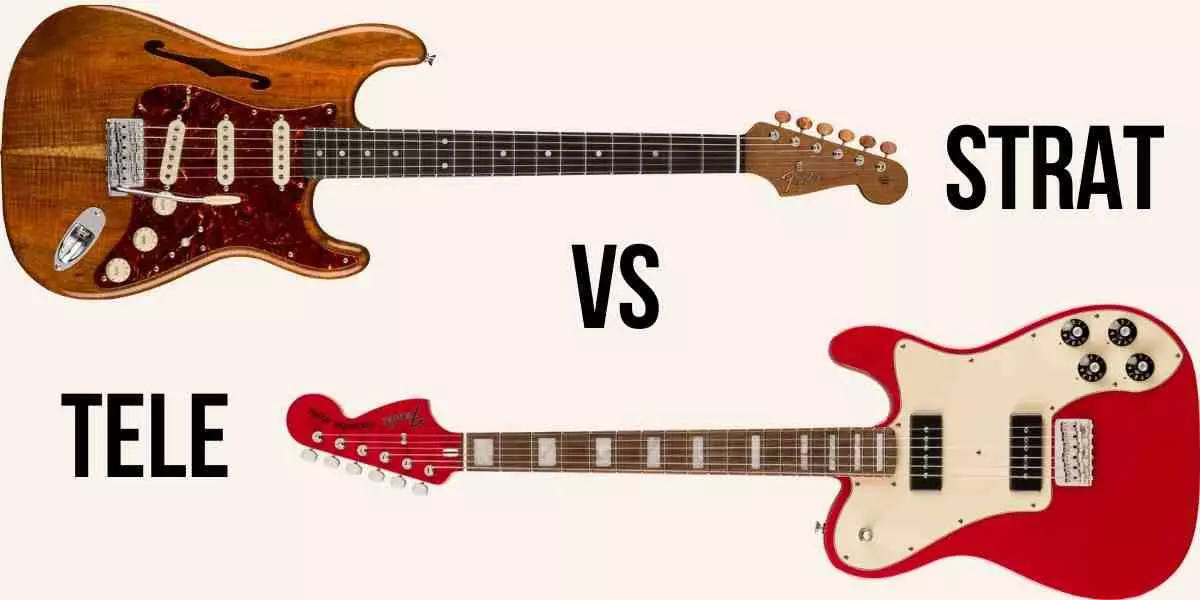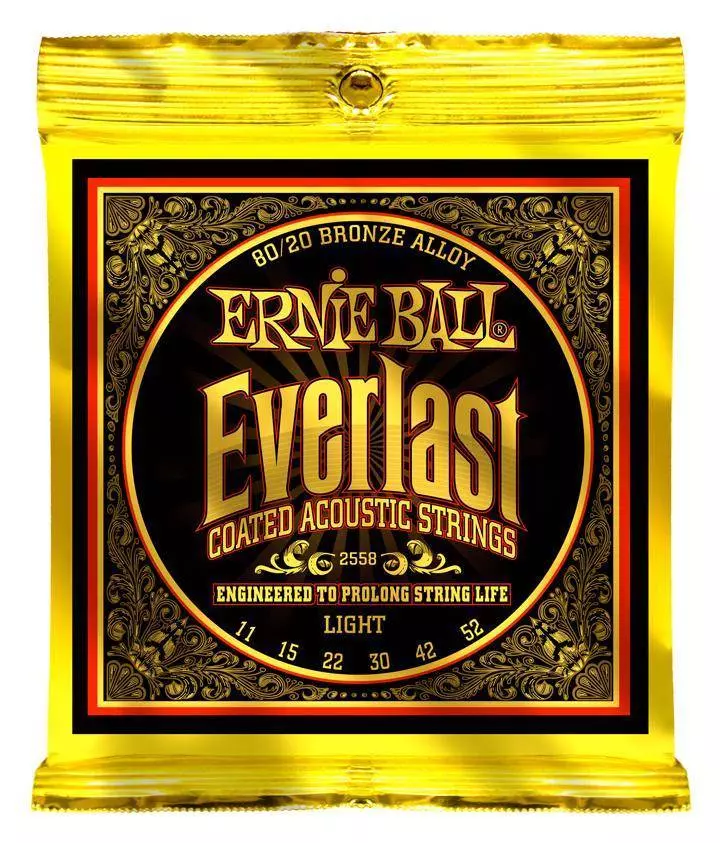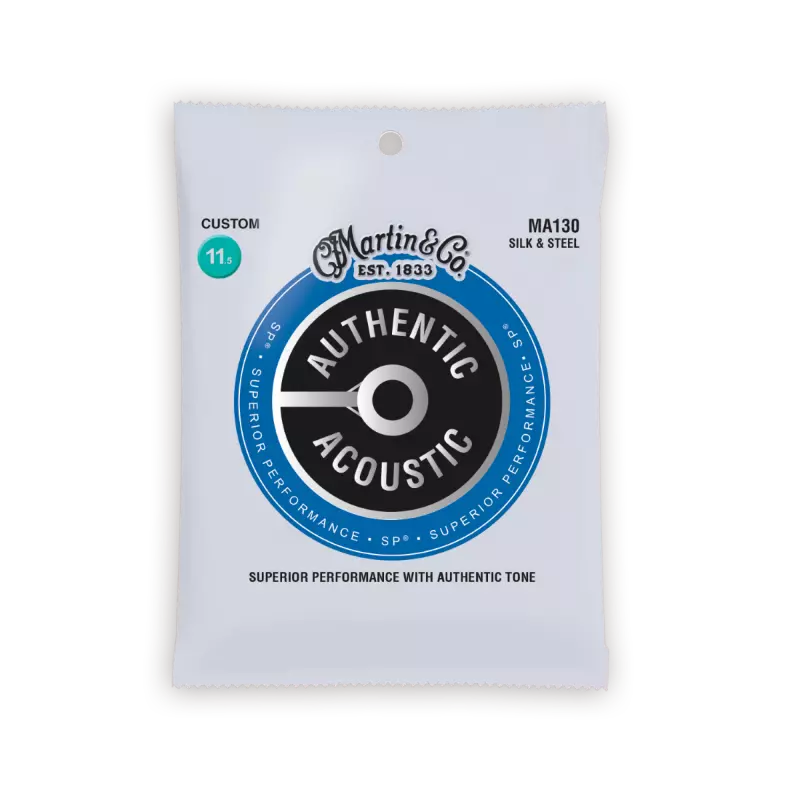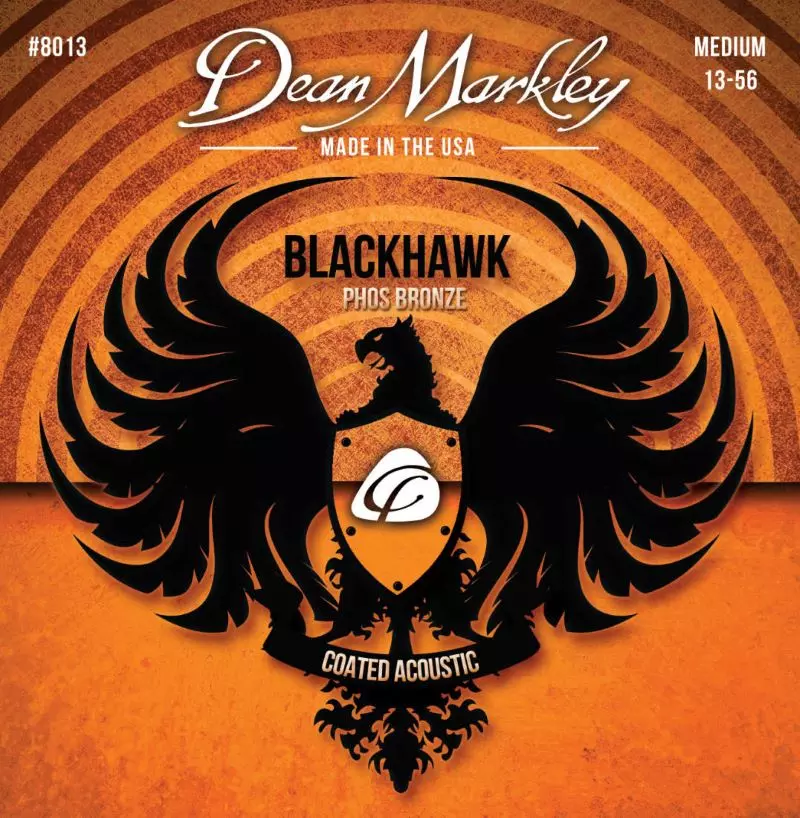Strings Attached - A Guide to Acoustic Guitar Strings
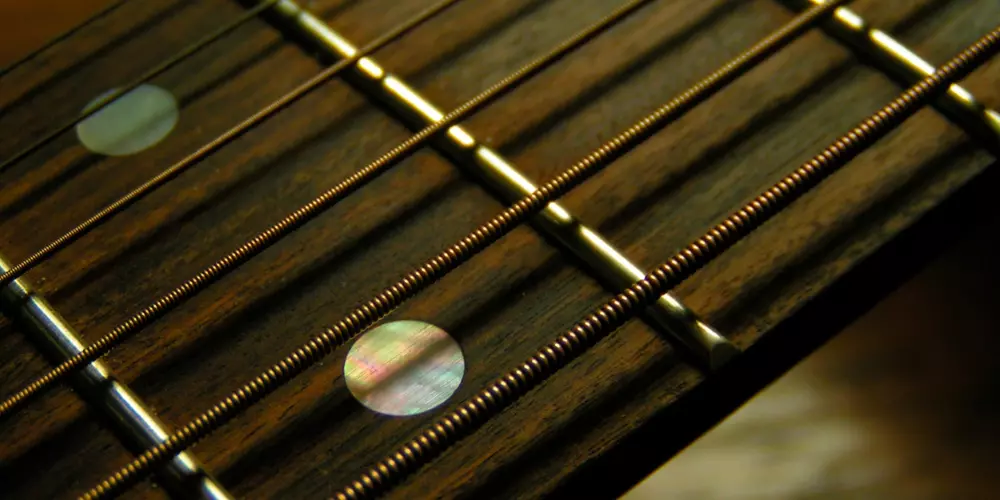
Updated on June 21, 2024
Choosing the right kind of strings for your guitar is important for tone and playability. It can also increase the longevity of your instrument.
This acoustic guitar strings guide will help you understand:
- The different types of acoustic guitar strings
- What are string gauges and how they work
- How to change your guitar strings (restringing your guitar)
Once you have an understanding of these topics, you will have a better idea of which strings are best for you and your guitar.
Types of Guitar Strings
The strings you choose for your guitar are pivotal in shaping its sound, playability and longevity. Not all strings are compatible with all guitars.
The different types of guitar strings that exist are: bronze, steel, nylon, nickel and brass. These string types can be further broken down by string materials. A set of guitar strings vary in material and construction.
Let's dive deeper into the different types of acoustic guitar strings.
80/20 Bronze Strings
80/20 Bronze strings are made of 80% copper and 20% tin. They have a bright, crisp sound that fades away as the bronze oxidizes. They offer excellent volume, making them great for outdoor and live performances.
The bronze tends to corrode faster than other strings, reducing their lifespan. Bronze strings are ideal for genres such as country, bluegrass and folk. They are great for strumming and flatpicking thanks to their strong projection.
The Everlast 80/20 Bronze Alloy Light Strings by Ernie Ball offers a crisp sound with pleasing overtones.
Phosphor Bronze Strings
Phosphor bronze strings are similar to bronze strings, with the addition of phosphor and zinc. Phosphor bronze doesn't sound as bright as regular bronze strings, but the benefit is they keep their tone longer.
Phosphor bronze is known for producing a warm, more balanced tone with a rich midrange. They are also more resistant to corrosion, extending their lifespan. Phosphor bronze strings are ideal for a variety of genres including rock, blues and jazz and accommodate both strumming and fingerstyle playing.
The EJ16 Phosphor Phonze Light Gauge String by D'Addario offers warm, bright and well balanced acoustic tones.
Silk & Steel Strings
Silk and steel strings are made with silk filaments under the winding. They produce a softer, warmer tone, and are generally easier to play. The reduced string tension in lighter gauges also makes these strings a good choice for older vintage guitars.
Silk and steel strings typically have a shorter lifespan because of their delicate silk wrapping. They are ideal in genres where a gentle tone is desired such as folk, classical and vintage music. Silk and steel strings are perfect for beginners whose style of play is to fingerstyle or light strumming.
Silk and steel strings are also a good solution for someone who wants to put nylon strings on a steel-string guitar. They have almost the same tension as nylon strings, and work well on steel-string bridges and fingerboards. Electric guitar strings generally use steel strings.
The Authentic Acoustic Silk & Steel Folk Strings by Martin Guitars features excellent tuning stability and corrosion resistance.
Nylon Strings
Nylon strings are made from nylon. They produce a warm, mellow and smooth tone offering rich resonance. They have a lower tension compared to steel strings, reducing strain on the guitar's neck thus tend to last longer.
This makes nylon strings a great option for beginner guitar players. Nylon strings are perfect for genres such as classical and flamenco. Nylon strings are best suited for fingerstyle and classical playing techniques.
As well, nylon strings will never function properly on a steel string guitar. They aren't designed for a steel string bridge, won't fit the nut properly, the fingerboard is too narrow and curved for them to vibrate properly, and the reduced string tension can warp and bow the neck.
The Superia Classical Nylon Guitar Strings by Rotosound features solid nylon trebles that has stood the test of time.
Nylon With Classical Guitars
Since the 1950s, nylon has been the material of choice for classical guitar strings.
Treble Strings (G, B, and high E):
• Clear nylon: the all-around standard, known for its balance of warmth, clarity, projection, and playability.
• Black nylon: produces a warmer, mellower sound often used by folk players.
• Titanium strings: bell-like clarity, with good sustain and little finger noise.
• Composite: made of a multi-filament material. They have pronounced brightness and offer a smooth transition between bass and treble strings.
Bass Strings (low E, A, and D):
Classical guitar bass strings have a nylon core surrounded by a metal winding.
• 80/20 Bronze: often called "brass" or "gold" strings, they are made of 80% copper and 20% tin, and are designed for optimum brightness and projection.
• Silver-plated copper: known for their smooth tone and feel.
A laser takes 200 diameter & tension measurements of a nylon string to ensure precise intonation. (courtesy: D'Addario)
Coated Strings
Coated strings are the newest form of technology. They are made from various alloys with an added protective coating applied to the entire string or just the wrap wire. Their tone can change depending on the base alloy's properties, but they have a slightly subdued sound due to their coating.
Coated strings are protected from dirt, sweat and oils, prolonging their life and requiring less maintenance and changing. Coated strings are suitable for all genres, beneficial for players who perform regularly and need reliable strings and work well with all playing styles.
Coated Phosphor Bronze Acoustic Strings by Dean Guitars is constructed with a high carbon nickel-plated steel wire core coated with an advanced, micro-thin coating.
Beyond the different types of acoustic guitar strings, different manufacturers use proprietary manufacturing processes that give their strings unique sound qualities. Take the time to experiment with different brands to find which ones work the best for you.
String Gauges
String gauge refers to the thickness of the strings. The gauge of a string affects both its playability and tone. If you notice on a regular six string acoustic guitar, the string gauge will be thickest at the top and get thinner towards the last string. Acoustic steel string guitar strings come in a variety of gauges, or thicknesses, named according to the high E string in the set.
- On thick heavy strings, the gauge number on a package is 12 or higher
- Medium gauge strings will have a gauge thickness of 10-11
- The thinnest strings will have a gauge thickness of 9 or lower
Virtually all new acoustic guitars come stocked with 12 or 13-gauge strings, with 12's being the most common.
A standard acoustic guitar string size chart
Standard Acoustic Guitar String Sizes
Lighter gauge strings require less tension to achieve concert pitch, and are easier to play. Fretting the notes requires less finger strength, and is easier on the fingertips.
This can be advantageous when just starting playing guitar, or getting back into shape. The downside of lighter strings is that they offer less acoustic projection, reduced attack, and can break more easily. Less string tension also results a wider radius of string vibration, so you can't pluck light strings as hard without getting fret buzz.
On the other head, heavier gauge strings provide a fuller, louder and more vibrate sound. They are thicker and stiffer, which makes heavy gauge strings tougher to play.
The advantage of heavy gauge strings is they are ideal for heavy metal and rock music, where loudness is key. The downside of heavier strings is they require more hand strength. Be prepared to build those calluses on your fingers.
Hard Picking • No Fret Buzz • Low Action
As a general rule, you can expect to have two of the above, but not all three when using lighter strings.
Unless you play with a delicate touch and a light hand, lighter strings will buzz more easily. The only way to prevent this is to raise the action, giving the string more room to vibrate. Unfortunately, raising the action can make the guitar more difficult to play.
When plucked, the radius of vibration of heavier strings isn't as wide, so the action can be set lower without causing unwanted buzz.
Leading brands of acoustic guitar strings include Dean Markley, Gibson, and Rotosound.
Restringing Your Guitar
Learning to restringing a guitar is like learning to change a tire, you never know when it could happen, but you will most likely need to one day. Below is a step by step guide to restringing your guitar. Note if you are uncomfortable restringing your own guitar, you can take it to your local Long & McQuade store and one of their experts can help.
Tools You’ll Need
- New set of strings
- String winder
- Wire cutters
- Tuner
- Cleaning cloth
How to Change Your Guitar Strings
- Remove the old strings
- Loosen each string by turning the tuning pegs counterclockwise
- Once loose, use wire cutters to cut the strings for easy removal
- Remove the bridge pins and take out the string ends from the bridge
- Clean the guitar
- Wipe down the fretboard and body with a soft cloth to remove any dirt and oil build-up
- Insert the new strings
- Starting with the low E string, insert the ball end of the string into the bridge hole and secure it with a bridge pin
- Pull the string and align it with the correct tuning peg
- Wind the strings
- Insert the string end through the tuning peghole, leaving some slack for winding
- Use a string winder to wrap the string around the peg. Ensure the wraps are neat and do not overlap.
- Repeat this process for all strings, moving from the low E to the high E
- Tune the strings
- Once all strings are in place, use a tuner to bring each string to its correct pitch
- Stretch the strings gently and retune until they hold their pitch consistently
- Trim excess string ends
- Use wire cutters to trim any excess string ends from the tuning peg
Finalizing Your Guitar Strings Search
To find the balance of playability and tone that's right for you, take the time to experiment with different string types and manufacturers. Which strings you decide to use is personal preference, but remember not all string types work for all guitars. Each one offers unique materials and engineering that can slightly play or feel different.
Old strings lose their tone overtime which will make your guitar sound dull or out of tune. While there is no set time replace your guitar strings, the most common suggestion is to change your strings every 100 hours of playing, or about 3 months, whichever comes first.
You can also stop by any Long and McQuade music store location to speak with local guitar experts who can offer their suggestions and input.

